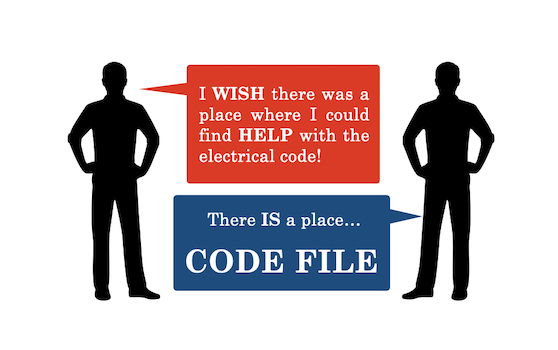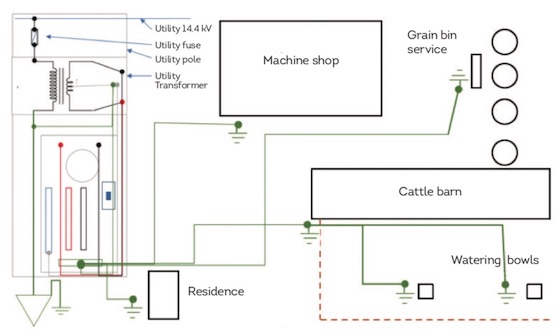
Uncategorized
Articles
Code File
Codes & Standards
Be a hero with zero (potential) – Code File April 2021
May 1, 2021 | By David Pilon

May 1, 2021 – In my last column, I discussed—in simplified terms—how an energized circuit can magnetically induce a current on another circuit, when the latter has no physical reference to the energized circuit (EB December 2020).
The effect this has on grounding is significant. When we ground a system, it is only that system—and not others that may have been created from this system—that is grounded.
I discussed how the utility’s earth return path—using the low-voltage neutral as a parallel path—is a concern; and how the earth return may have an effect on stray currents around a farm (depending on, but not limited to, things like moisture content and soil resistivity).
Again, we face the question: why do we ground? We ground so as to stabilize the system we have created, and to set our reference (I am right here, right now).
I think we are all comfortable with the fault return path, and the requirement for any faults to complete the circuit in the system to activate an overcurrent device.
So what about the reference point? How does this affect a sprawling farm site?
When we ground at the service (we are right here, right now), then move 200+ feet across the yard with a feeder to a barn, or 300 feet to a set of grain bins, we are now being fed from a system that is established back across the yard (right there, right now). This could expose us—and especially our quadrupeds—to potential shock hazards.
As we move outward to other facilities and buildings in rural Saskatchewan, we require the addition of equipotential grounding. These equipotential ground rods establish the ground potential as the same as the bonding conductor carried from neighbouring facilities.
This is very important in an area fed with an earth return system on a farm, as quadrupeds are extremely sensitive to stray earth currents.
By establishing equipotentiality for the entire area that’s supplied with electricity from the system, we reduce the effects of stray current and further reinforce system stabilization with the earth (see Figure).

We do not permit re-grounding of the neutral. Instead, we require a bonding conductor for a fault return path to be run to all structures, and that it be connected to an equipotential grounding plate at each structure.
In so doing, we ensure that all structures fed from that one service are as close as possible to the same zero potential throughout the yard. This promotes safety, reduces parallel neutral paths, and reduces fire and shock hazards for people and animals.

David Pilon is manager, Electrical Inspections, at Technical Safety Authority, Saskatchewan (TSASK). He also serves as vice-chair of the Canadian Certified Electrical Inspector (CCEI) committee of the International Association of Electrical Inspectors (IAEI), Canadian Section.
This column—along with other great content—appears in the April 2021 edition of Electrical Business Magazine. Even more back issues are located in our Digital Archive.
Print this page